▼ 8.91 lakh tourists in Nov 2016, growth of 9.3 percent [12-28-16]
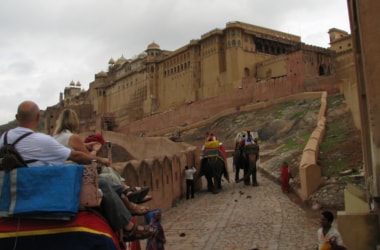 Demonetisation did not impact the tourist footfall adversely this year, with 8.91 lakh foreign tourists visited India in Nov 2016. Demonetisation did not impact the tourist footfall adversely this year, with 8.91 lakh foreign tourists visited India in Nov 2016.
This marks the growth of 9.3 % over the same month last year.
Foreign tourist arrivals (FTAs) during December 2015 was 8.16 lakh, while it was 7.65 lakh in December 2014.
Foreign Exchange Earnings (FEEs) from tourism during the month of December were INR 14,474 crore as compared to INR 12,649 crore in the same month last year, recording a growth of 14.4 %.
The US accounted for highest share of tourist arrivals followed by the UK and Bangladesh in December 2016, according to an official release.
FTAs during January-December, 2016 were 78.53 lakh, recording a growth of 10.4 % as compared to 71.14 lakh during the corresponding period last year.
FEEs from tourism in January-December were Rs 1,38,845 crore, witnessing an increase of 14.7 % as compared to the INR 1,21,041 crore during the corresponding period last year.
Among the top 15 source countries in December, share of the US was highest with 15.53 %, followed by these:
15 Source countries with Highest Foreign Tourist Arrivals (Dec 2016)
| “Country” | Highest Foreign Tourist Arrivals (Dec 2016) |
|---|
| US | (15.53 %) | | UK | (11.21 %) | | Bangladesh | (10.72 %) | | Canada | (4.66 %) |
| Russia | (4.53 %) | | Australia | (4.04 %) | | Malaysia | (3.65 %) | | Germany | (3.53 %) | | China | (3.14 %) | | France | (2.88 %) | | Sri Lanka | (2.49 %) | | Japan | (2.49 %) | | Singapore | (2.16 %) | | Nepal | (1.46 %) | | Thailand | (1.37 %) |
| “Airport” | Share of foreign tourists |
|---|
| Among the top 15 ports, the share of Delhi Airport was highest with | (32.71 %) | | followed by Mumbai Airport | (18.51 %) |
| Chennai Airport | (6.83 %) | | Bengaluru Airport | (5.89 %) | | Haridaspur Land check post | (5.87 %) | | Goa Airport | (5.63 %) | | Kolkata Airport | (3.90 %) | | Cochin Airport | (3.29 %) | | The share of Hyderabad Airport was | (3.14 %) | | while that of Ahmadabad Airport | (2.76 %) | | Trivandrum Airport | (1.54 %) | | Trichy Airport | (1.53 %) | | Gede Rail | (1.16 %) | | Amritsar Airport | (1.15 %) | | Ghojadanga land check post | (0.82 %) |
|
▼ RBI opposed Watal Committee on payment and settlement regulator. [12-21-16]
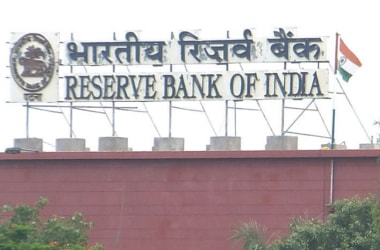 The Reserve Bank of India (RBI) has opposed a move to establish a separate entity to regulate payments and settlements as recommended by Ratan Watal Committee for Digital Payments. The Reserve Bank of India (RBI) has opposed a move to establish a separate entity to regulate payments and settlements as recommended by Ratan Watal Committee for Digital Payments.
The 11-member committee was formed in September 2016 by the Union Finance Ministry to review existing payment systems in country and recommend appropriate measures for encouraging Digital Payments.
One of the committee’s terms of reference was to study and recommend changes in the regulatory mechanism under various acts such as the RBI Act, Payments and Settlement Act, and the Information Technology Act among others.
Based on this, the committee had recommended making regulation of retail payments independent from the function of RBI to give digital payments boost.
It called for establishing separate Payments Regulatory Board (PRB) as an independent body for retail payments and suggested that RBI’s regulation must be kept only for SIPS (systemically important payment system).
According to RBI, the global practice is that both the SIPS and retail payment systems are under the central bank for a variety of reasons including issues of inter-connectivity between the systems and the role of the central bank as the lender of last resort (LOLR).
RBI has suggested a monetary-policy-committee-style structure for the PRB, where outcomes are decided independently, but implementation remains with the banking regulator.
|
▼ Last window for disclosing black money! [12-19-16]
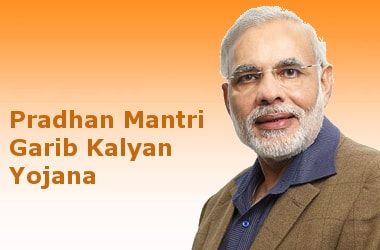 GoI has urged people to take advantage of the last window for disclosing black money and make declarations under the Pradhan Mantri Garib Kalyan Yojana that opens on 17th Dec, 2016. GoI has urged people to take advantage of the last window for disclosing black money and make declarations under the Pradhan Mantri Garib Kalyan Yojana that opens on 17th Dec, 2016.
The Pradhan Mantri Garib Kalyan Yojana provides for 50 percent tax and surcharge on declarations of unaccounted cash deposited in banks.
Declarants also have to park a quarter of the total sum in a non-interest bearing deposit for 4 years.
The government also released an email id blackmoneyinfo@incometax.gov.in and urged people to mail any information about people who have black money.
PMGKY will close on March 31, 2017.
Disclosure under the scheme will attract 50% tax and penalty. Declarations under the black money disclosure scheme will be kept confidential. Information will not be used for prosecution.
Receipt of tax paid on deposited will have to be shown to avail disclosure scheme benefits including immunity from prosecution.
Currently, INR 393 crore of cash and jewellery has been seized of which INR 316 crore is cash and the rest is bullion and jewellery. Of the total INR 316 crore, INR 80 crore is in new currency.
Raids have revealed INR 2600 crore of concealed income.
|
▼ RBI kept repo rate unchanged, eliminates temporary 100 percent CRR [12-8-16]
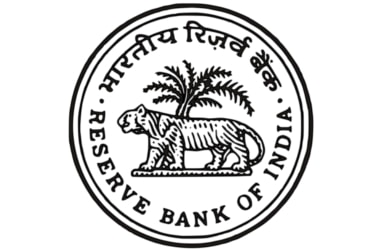 Reserve Bank of India (RBI) on 7th Dec 2016 kept its key lending - the repo rate - unchanged at 6.25 percent. Reserve Bank of India (RBI) on 7th Dec 2016 kept its key lending - the repo rate - unchanged at 6.25 percent.
This move ended hopes of lower borrowing costs to arrest the demonetisation-induced slide in spending and investment.
The Monetary Policy Committee felt that the assessment is clouded by the still unfolding effects of the withdrawal of specified bank notes (SBNs).
It also lowered its growth forecast for 2016-17 to 7.1 percent from 7.6 percent earlier.
The MPC also decided to restore the cash reserve ratio (CRR) - the proportion of deposits banks are required to park with the RBI - at 4 percent.
The surge in post-demonetisation liquidity had prompted the RBI to temporarily ask banks to park the entire mountain of additional cash as 100 percent cash reserve ratio (CRR) with the central bank.
RBI revised the ceiling on issuance of securities under the market tabilization scheme (MSS) to INR 6 lakh crore, from the previous limit of INR 30,000 crore for financial year 2016-17.
Banks were not in favour of a higher CRR, as parking funds with the RBI in this window does not fetch any returns, and works against lowering lending rates for final individual and corporate borrowers.
India’s Repo Rate
- Stands for: Repurchase Option.
- Since January 2015, the RBI has cut the repo rate six times. India’s retail inflation has touched 4.20 percent in October, triggering hopes of a rate cut.
- The RBI and the government have set a retail inflation target of 4 per cent for the next five years with an upper tolerance level of 6 percent and lower limit of 2 per cent.
- Household spending accounts for more than half of India’s GDP.
- The slowdown in household spending could push back investment growth.
|
▼ India crosses USD 300 billion FDI milestone [12-8-16]
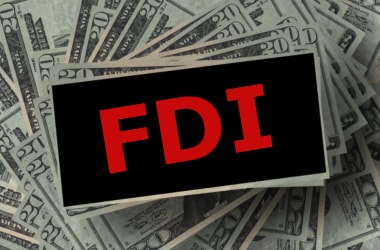 India crossed the $300 billion foreign direct investment (FDI) milestone between April 2000 and September 2016. India crossed the $300 billion foreign direct investment (FDI) milestone between April 2000 and September 2016.
- It has succeeded in firmly establishing its credentials as a safe investment destination in the world. Thirty-three per cent of the FDI came through the Mauritius route.
This is because the investors wanted to take advantage of India’s double taxation avoidance treaty with the island nation. India received $101.76 billion from Mauritius between April 2000 and September 2016. The cumulative FDI inflows during the period amounted to $310.26 billion. The inflows in the first half of the current financial year were $21.62 billion, according to data compiled by the Department of Industrial Policy and Promotion. - The other big investors have been from Singapore, the US, UK and the Netherlands.
- According to the World Investment Report 2016, global FDI flows rose by 38 per cent to $1.76 trillion, the highest level since the global economic and financial crisis began in 2008.
About Indian economy FDI Flows
- Liberalisation of the FDI policy framework has benefitted India.
Major national development programmes that made India the destination for foreign funds include:
- Start Up India
- Stand Up India
- Make in India
- Digital India
- Skill India
- Besides increasing competitiveness, it has boosted investment.
- India last crossed the $300 billion mark at a time when the global economic slowdown has had a dampening impact on FDI flows.
|
▼ Assam’s Hailakandi district - First in the state to go cashless [12-6-16]
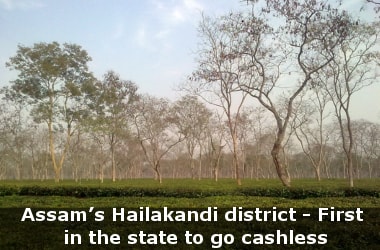 The move follows Assam government’s directive of making cashless transactions to the plantation workers. 5 correspondents from the Assam Grameen Vikash Bank assisted the payment process. The move follows Assam government’s directive of making cashless transactions to the plantation workers. 5 correspondents from the Assam Grameen Vikash Bank assisted the payment process.
504 plantation workers who are employed at the Burnie Braes tea estate received their wages through their individual bank accounts.
This move supports Prime Minister Narendra Modi’s Cashless India drive, following the demonetisation of old ?500 and ?1000 currency notes on 9 November 2016.
Other states which have districts that have gone cashless include Goa and Maharashtra.
|
▼ CSO: India’s GDP races to 7.3 percent [12-2-16]
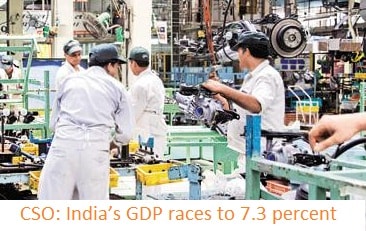 Central Statistical Office on 30th Nov 2016 announced India’s GDP accelerated to 7.3 percent in the second quarter of 2016-2017. This is up from a provisional 7.1 percent expansion in Q1. Central Statistical Office on 30th Nov 2016 announced India’s GDP accelerated to 7.3 percent in the second quarter of 2016-2017. This is up from a provisional 7.1 percent expansion in Q1.
Gross Value Added rose to 7.1 percent.
GDP growth accelerated in the second quarter from 7.1 percent, but GVA growth slowed 7.3 percent in that period.
Both GDP and GVA growth were slower in this Q2 compared to 2015-2016’s Q2. The Q2 of 2015-2016 showed a GDP growth of 7.6 percent and GVA growth of 7.3 percent.
The agriculture sector maintained the overall growth by registering a 3.3 percent GVA growth rate in Q2 of this financial year in comparison with 2 percent in Q2 of 2015-16.
The manufacturing sector saw considerable slowdown as it registered GVA growth of 7.1 percent in Q2 of this financial year as against 9.2 percent in 2015-2016’s Q2.
The mining and quarrying sector growth fell by 1.5 percent in Q2 compared with the contraction of 0.4 percent in the first quarter and a growth of 5 percent in Q2 of 2015-16.
Sectors like manufacturing, electricity, mining, services and others show a fall in the September quarter because they are not supported by demand.
Except for agriculture, public administration and construction, drop in outputs across all sectors took place.
Gross fixed capital formation equalled 29 percent of GDP in this Q2 compared to 32.9 percent in the previous year’s Q2.
Government final consumption expenditure was 13 percent of GDP in this Q2 compared to 12.1 percent in the earlier year. GFCE grew 18.8 percent in this Q1 and 15.2 percent in this Q2.
Government’s Capital Expenditure (Plan and Non Plan) fell 12.81 percent to INR 129459 crore as against INR 143329 crore a year back.
What is GDP?
GDP: Monetary value of all finished goods and services produced in a country in a certain time period. It is generally calculated on annual basis; it can be computed on quarterly basis as well.
It is a broad measurement of nation’s overall economic activity.
GDP = Private consumption+ Public consumption+ Government outlays+ Investments + Exports - Imports.
Where, GDP = C + G + I + NX
- C = all private consumption, or consumer spending
- G = sum of government spending,
- I = sum of all the country's investment, including businesses capital expenditures and
- NX is the nation's total net exports, calculated as total exports minus total imports (NX = Exports - Imports).
|
| Chronology of events |
|
India’s economy saw a marginal acceleration, growing at 7.3% in the second quarter of 2016-17. It expanded by 7.1% in the first quarter of 2016-17 and at 7.6% in the corresponding quarter last year.
|
|
RBL Bank has collaborated with Bajaj Finance to launch a series of co-branded credit cards for the customers in the country.
|
|
Nearly 90 per cent of the 2 lakh ATMs deployed across the country have been recalibrated to dispense the new 500 and 2,000 rupee notes. A working group was given the deadline of 30th Nov which has been met.
|
|
New currency notes of Rs. 50 and Rs. 20 denomination will soon be issued, the Reserve Bank of India said on Dec 4; Current notes will continue to be legal tender and the new notes will have similar design and security features.
|
|
Indian services activity dived into contraction in November after Prime Minister Narendra Modi's surprise move to withdraw high denomination banknotes; Nikkei India Services Purchasing Managers’ Index (PMI) stood at 46.7 in November, down from 54.5 in October. A reading above 50 means the sector is expanding while a score below this mark means contraction.
|
|
Yes Bank has partnered cab aggregator firm Ola to set up mobile ATMs across 30 locations in India that will allow people to withdraw up to Rs 2,000 per card.
|
|
Wearables market up 3.1% to 23m units in Q3: IDC Global wearables market grew 3.1 percent in the July-September quarter over the same period last year to 23 million units, research firm IDC said
|
|
IOC announced 0.75 percent discount on petrol and diesel fuel purchases, if the payment is made using digital means.
|
|
Reserve Bank of India directed banks to keep record of new notes in view of seizures by Income Tax Department and other law enforcement agencies of large quantities of high denomination notes.
|
|
Sarbananda Sonowal, the Chief Minister of Assam inaugurated a Solar Battery Station at Bindhakata Tengapukhuri village in Dibrugarh.
|
|
The US Federal Reserve has raised its benchmark interest rate by 0.25 percent, only the second increase in a decade and first in 2016.
|
|
The US Federal Reserve has raised its benchmark interest rate by 0.25 percent, only the second increase in a decade and first in 2016.
|
|
As per preliminary reports received from the States, the total area sown under Rabi crops as on 16th December, 2016 stands at 519.27 lakh hectares as compared to 490.48 lakh hectare this time in 2015.
|
|
Amendment in EIA Notification, 2006 on Integration of Environmental Conditions with Building Permissions; The Government has put in place a new framework and an institutional structure for streamlining the environmental clearance for building and construction sector.
|
India attains 4th position in global wind power installed capacity:- 46.33 GW grid-interactive power; 7,518 MW of grid-connected power
1502 MW Wind power capacity added
- Small hydro power capacity reaches 4323 MW, 92305
- Solar Pumps installed, 38,000 crore Green Energy Corridor is being set up
- Surya Mitra” mobile App launched
- Solar Tariff as low as INR 3/unit
|
|
India’s plan for countrywide GST took a step forward with a consensus on two enabling legislations reached on 22nd Dec 2016. The issue of dual control to divide assessing powers between the Centre and the state continued to remain unresolved.
|
|
Andhra Pradesh government allotted land to NPCIL for setting up 6600 MW nuclear power project in Kovvada.
|
|
North-eastern state Tripura has decided to opt for cashless payment in all its public transactions Tripura.
|